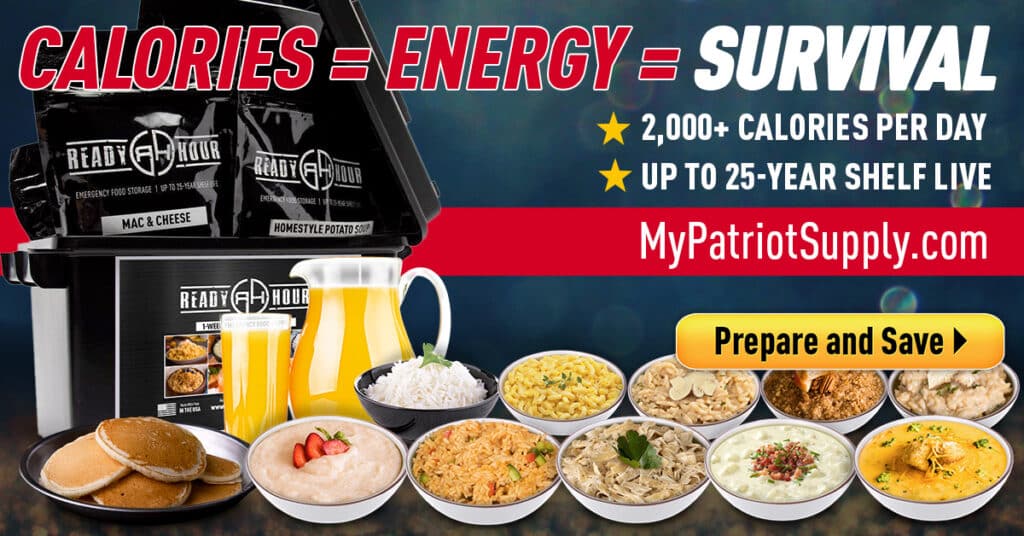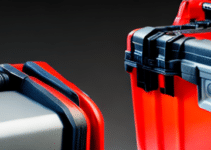When it comes to emergency preparedness kits and survival gear, maps are an essential item that should never be overlooked. In times of crisis or disaster, having the ability to navigate with maps can be a lifeline.
These maps should cover the local area as well as surrounding regions, providing a comprehensive view of the surroundings.
They should be easy to read and include important landmarks, roads, and evacuation routes.
Including a compass or GPS device in the emergency pack can be a reliable backup option in case of a power outage or limited battery life. It is also important to provide instructions on how to read and interpret maps effectively, empowering individuals to navigate their emergency preparedness kits with confidence.
‘Click here to learn more about: ‘ patriot
What to Include in an Emergency Kit Maps
When building your emergency kit, remember to include topographic maps as a crucial tool for navigating through uncertain situations. These maps should be detailed and up-to-date, providing information on important landmarks, roads, and potential evacuation routes.
It is also important to consider including maps specific to the types of emergencies common in your area, such as maps highlighting danger zones or evacuation routes for natural disasters like hurricanes or earthquakes.
Choose durable, waterproof, and tear-resistant maps that can withstand harsh conditions.
Take the time to study and familiarize yourself with the maps beforehand, as this knowledge will prove invaluable during high-stress situations when every second counts
Supplies
When it comes to supplies, it is important to have a diverse selection of items to meet your needs, such as waterproof maps for camping or laminated maps for outdoor adventures. Whether you are preparing for a camping trip or organizing your home, having the right supplies on hand is essential.
In addition to emergency kits and maps, there are other supplies to consider.
For camping enthusiasts, camping maps are a must-have.
These maps provide detailed information on outdoor trails, campgrounds, and recreational sites. You can choose between different types of maps, such as wilderness maps, satellite maps, or digital maps, depending on your preferences. Having a printed or laminated map that is waterproof and foldable is essential for navigating through the wilderness during camping trips.
Camping Supplies
- Camping maps provide detailed information on outdoor trails, campgrounds, and recreational sites.
- There are different types of camping maps available, such as wilderness maps, satellite maps, or digital maps.
- A printed or laminated map that is waterproof and foldable is essential for navigating through the wilderness during camping trips.
- Having a diverse selection of camping supplies, including waterproof maps, is important to meet your needs during outdoor adventures.
Why maps matter in emergency preparedness
Pocket maps and guidebooks are invaluable tools in emergency preparedness as they provide critical information and guidance during times of crisis. They play a crucial role in identifying affected areas and aiding navigation, as well as helping emergency responders and relief organizations communicate and coordinate effectively.
By sharing a common visual reference, stakeholders can collaborate more efficiently and ensure a unified approach.
Maps can help identify vulnerable populations and areas prone to specific hazards, allowing for targeted preparedness efforts.
Maps are essential in emergency preparedness, providing a visual representation that aids in strategic response and safeguards the well-being of communities
Choosing the right maps for your kit
Emergency blankets, ponchos, food, water, hygiene supplies, communication devices, multitool, rope, and tarp are all important items to include in an emergency preparedness kit, but maps are an essential part as they provide crucial information and guidance during times of crisis. When choosing the appropriate maps for your kit, it is important to consider factors such as scale, type, and specific features.
The scale of a map determines the level of detail it offers, so finding one that strikes the right balance between information and readability is key.
Consider whether a traditional paper map or a digital map is more suitable for your needs.
Think about the specific features you may need on your maps, such as evacuation routes, emergency shelters, or medical facilities. By carefully selecting the right maps for your kit, you can ensure that you have the necessary tools to navigate unfamiliar territories and locate important resources during a crisis, thus guaranteeing your preparedness with emergency blankets, ponchos, food, water, hygiene supplies, communication devices, multitool, rope, and tarp.
Choosing Maps for an Emergency Preparedness Kit
- The scale of a map determines the level of detail it offers, allowing you to find the right balance between information and readability.
- Consider whether a traditional paper map or a digital map is more suitable for your needs.
- Specific features on maps, such as evacuation routes, emergency shelters, or medical facilities, can be crucial during times of crisis.
- By carefully selecting the right maps for your kit, you can navigate unfamiliar territories and locate important resources, ensuring your preparedness during emergencies.
Essential items for emergency kits
When preparing for emergencies, it is essential to include gloves, masks, goggles, and water purification tablets in your emergency kit. These items include water, food, a first aid kit, and personal protective equipment (PPE) such as gloves, masks, and goggles.
Having these items is crucial for protecting yourself and your family during a crisis.
It is also important to have shelter items like a tent or sleeping bag, which can provide a safe and comfortable place to rest.
In terms of sustenance, including a stove, cooking utensils, and water purification tablets is necessary to ensure you have the means to prepare and purify food and water
Navigational tools and preparedness kits
When it comes to navigational tools and preparedness kits, it's important to consider additional items such as a fire starter or emergency radio that can greatly assist in emergency situations. One such item is a fire starter, which can be useful for starting a fire to provide warmth and cooking capabilities.
Another essential tool is an emergency radio, which allows you to stay informed about any emergency broadcasts or updates.
A solar charger is a handy addition that ensures you can recharge essential electronic devices even without access to electricity.
A signal mirror is crucial for attracting attention and signaling for help. Alongside these tools, include a compass, knife, first aid kit, medication, and some cash for emergencies.
Navigational Tools and Preparedness Kits
- A fire starter can be a life-saving tool in emergency situations, providing warmth and cooking capabilities.
- An emergency radio is essential for staying informed about emergency broadcasts and updates.
- A solar charger ensures that essential electronic devices can be recharged even without access to electricity.
- A signal mirror is crucial for attracting attention and signaling for help in emergency situations.
Effective map usage during disasters
During emergencies, having access to accurate and up-to-date maps is crucial for effective response and recovery efforts, as well as for ensuring the safety of individuals during emergency evacuations. Maps provide valuable information about evacuation routes, emergency shelters, and potential danger zones.
They should be clear and easy to understand, including important landmarks like hospitals and fire stations for navigation and emergency response.
Maps highlight the safest evacuation routes, enabling individuals and emergency services to navigate hazardous areas and reach designated safe zones.
They also assist in coordinating the distribution of emergency resources, optimizing response efforts. By serving as a common reference point for agencies and organizations involved in disaster management, maps facilitate communication and coordination. It is essential to regularly update maps with real-time information on road closures, damaged infrastructure, and changing conditions to ensure responders have access to important documents, emergency contact information, and all necessary supplies for evacuations, including pet supplies, child supplies, elderly supplies, infant supplies, and feminine products.
Wilderness emergencies and topographic maps
In the event of a wilderness emergency, it is crucial to be prepared with emergency procedures and an emergency response plan. While topographic maps are a valuable resource for navigating the terrain, they should be complemented by other essential emergency preparedness items.
These include first aid supplies, emergency shelter, and communication devices such as satellite phones or personal locator beacons.
It is vital to have a basic understanding of map reading and navigation skills.
This knowledge will help individuals effectively use a topographic map in a wilderness emergency. By combining these elements, individuals can make informed decisions and ensure their safety in unpredictable situations
Wilderness Emergency Preparedness
- Topographic maps are a valuable resource for navigating the terrain in a wilderness emergency.
- Emergency preparedness items such as first aid supplies, emergency shelter, and communication devices are essential in a wilderness emergency.
- Having a basic understanding of map reading and navigation skills is vital for effectively using a topographic map in a wilderness emergency.
- By combining these elements, individuals can make informed decisions and ensure their safety in unpredictable wilderness emergency situations.
Benefits of printed maps in emergency supplies
Printed maps can be shared and used by multiple people simultaneously, enhancing emergency preparedness and facilitating the work of an emergency response team. In a situation where multiple individuals or groups may need to coordinate their movements or meet up at a specific location, having a physical map that everyone can reference simplifies communication and ensures everyone is on the same page.
Printed maps can include additional information that may not be readily available on digital maps.
This can include details about evacuation routes, emergency shelters, or areas to avoid due to potential hazards.
Having this information readily accessible can help individuals make informed decisions and stay safe during an emergency.
Printed maps can serve as a backup in case technology fails. While many people rely on GPS or smartphone applications for navigation, these devices can malfunction or run out of battery power, leaving individuals vulnerable in emergency situations.
Essential Survival Gear Navigate with Ease
Survival Situations Essential Navigation Tools





